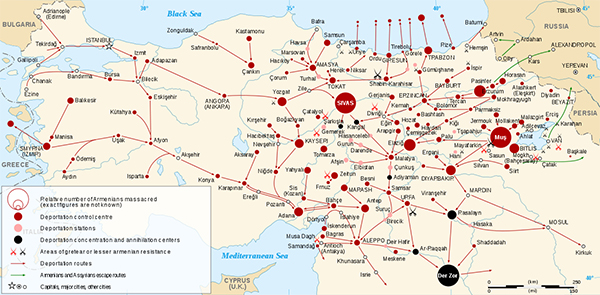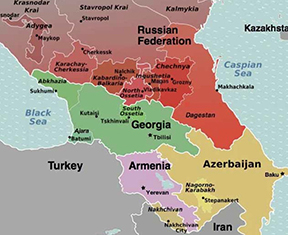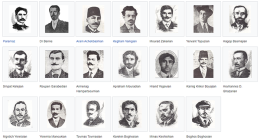By Emre Can Daglioglu
Agos.com.tr
Journalist Murat Bardakçi has announced that a Turkish Historical Society [TTK] official removed ‘dispatch registers’ kept after the deportation law was issued in 1915 from the Ottoman archives, and hid them in the archive of another institution. According to Bardakçi, this was done not by official procedure, but was the outcome of an individual’s interference. Even the newly changed administration of the Turkish Historical Society does not know where these documents are located at present.
Murat Bardakçi, who has published the books titled ‘Talat Pasa’nin Evrak-i Metrukesi’ (The Abandoned Documents of Talat Pasha) containing documents and private correspondence on the Armenian question found in the private archive of Talat Pasha, and ‘Ittihatçi’nin Sandigi’ (The Wooden Chest of the Unionist) containing the correspondence of high-ranking Unionist leaders, has made striking statements regarding the Ottoman archives, which state officials claim are open on every occasion. Bardakçi said that a Turkish Historical Society [TTK] official removed ‘dispatch registers’ kept after the deportation law was issued in 1915 from the Ottoman archives, and hid them in the archive of another institution. According to Bardakçi, this was done not by official procedure, but was the outcome of an individual’s interference. Even the newly changed administration of the Turkish Historical Society does not know where these documents are located at present. Bardakçi added that he guessed that the ‘records on abandoned properties [emval-i metruke]’ were in the same location as the abovementioned dispatch registers, and that a proper investigation could unearth all these documents.
Dispatch registers
The dispatch registers mentioned by Bardakçi are lists which include the number and names of Armenians subjected to forced deportation in 1915, and from which region they were deported. The dispatch, or deportation, was carried out according to orders received from central government, by the keeping of records by local administrators who implemented the deportation process on the Armenians who were forced out of their settlements, and the control and updating of these records at the places they were sent to. The ‘records on abandoned properties’, on the other hand, contained detailed information regarding which assets or properties of the deported Armenians were seized, the address, and number or kind of property, and also in the same location as the abovementioned dispatch registers, and also information on the Muslim refugees located in places from which Armenians were evacuated from, or on the institutions and persons the assets and properties were passed on to. Bardakçi points out that, although they do not cover all areas of settlement, a significant number of dispatch registers and abandoned property records are presently in the archive. The reason Bardakçi presumes the abandoned property records and dispatch registers are kept together is that the Directorate for the Resettlement of Tribes and Refugees [‘Iskan-i Asair ve Muhacirin Müdüriyeti’] to which the task of dispatch was assigned, was also charged with the classification and organization of abandoned properties.
Taner Akçam: ‘These registers can lead us to very important information’
Historian Taner Akçam’s comments on Murat Bardakçi’s claims:
“If the mentioned ‘dispatch registers’ are the books within which the Armenians deported from each town and province are kept, then their importance cannot be exaggerated. Because these registers could help us access a lot of information, including first and foremost the numbers of people exterminated. That is to say, from what we understand both from the Union and Progress trials that began in Istanbul in 1919, and from certain documents in the Ottoman archive, the ‘normal’ dispatch, or deportation, had to be done according to these documents. The Istanbul Court Martial Authority sought to access these documents during the hearings, and asked after their location. As far as we know, no document was delivered to the court during those years. Similar records must have been kept at places identified as destinations.
Now let us imagine that we have the names and numbers of 50 families exiled from Zeitun and reached Aleppo, then we must also know how many families were forced to set out from Zeitun. The gaps in the figures could provide us detailed information regarding the acts of extermination. What I can finally say is that the Turkish Historical Society has acted in line with its reputation. Of course, one must also ask: Why were the abandoned property records, along with the dispatch registers, collected from the archives and concealed at a different location?”









